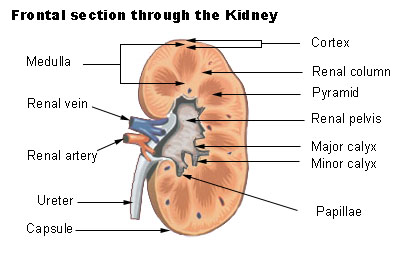
Chronic kidney disease (CKD) in cats is commonly associated with an increase in plasma parathyroid hormone (PTH) and is known as renal secondary hyperparathyroidism. PTH is a primary regulator of calcium and phosphorus homeostasis. PTH secretion is stimulated when parathyroid gland calcium-sensing receptors detect a low ionized calcium plasma concentration. Cats with CKD have decreased glomerular filtration rate resulting in phosphate retention. Retained phosphate complexes with ionized calcium leading to reduction in ionized calcium concentration and an increase in PTH. The prevalence of hyperparathyroidism in cats with CKD has previously been reported to be as high as 84%. PTH is regarded as a uremic toxin and elevated levels are suggested to contribute to renal damage and increase morbidity and mortality. Clinical consequences of increased PTH concentration include renal osteodystrophy, soft tissue calcification, glucose and lipid metabolic disturbances, contribution to immunosuppression and anemia, and neurologic and cardiovascular dysfunction. Therefore, recognition of the stage of CKD at which plasma PTH concentrations increase and management of renal secondary hyperparathyroidism is important in cats.

The authors of this paper enrolled 118 clinically normal geriatric cats (over 9 years) with various degrees of renal disease. Cats were monitored for 12 months after which time they were categorized into 1 of 3 groups. Group 1 cats were basically non-azotemic with adequate urine concentrating ability, group 2 cats were mildly azotemic (creatinine between 1.6-2 mg/dL, or creatinine > 2.0 mg/dL with USG > 1.035), and group 3 cats were azotemic (creatinine > 2.0 mg/dL with USG < 1.035). This study revealed that plasma PTH concentration could increase in non-azotemic cats that subsequently developed azotemia, compared with cats remaining non-azotemic, in the absence of concurrent hypocalcemia or hyperphosphatemia. Traditionally, the pathophysiologic mechanism for the development of renal secondary hyperparathyroidism in cats with CKD was thought to only involve disturbances in calcium and phosphate homeostasis. Therefore, this study suggests other factors are involved in the development of renal secondary hyperparathyroidism. Other factors discussed included age, decreased ionized calcium rather than total calcium concentrations, hypomagnesemia, decreased expression of calcium-sensing receptors, and increased fibroblast growth factor-23 concentration. A positive correlation was noted between increased PTH and calcitriol concentrations, but the role of calcitriol in the development of renal secondary hyperparathyroidism in cats remains unclear. [GO]
See also: Kidder AC and Chew D. Treatment options for hyperphosphatemia in feline CKD: What's out there? Journal of Feline Medicine & Surgery. 2009; 11: 913-24.
Related blog articles:
Survival of cats with kidney disease (September 2008)
Predictors of feline kidney disease (August 2009)
Improving treatment of feline kidney disease; 2012 Winn grant (May 2012)
More on cat health:
Winn Feline Foundation Library
Find us on Facebook
Follow us on Twitter
Join us on Google+
No comments:
Post a Comment